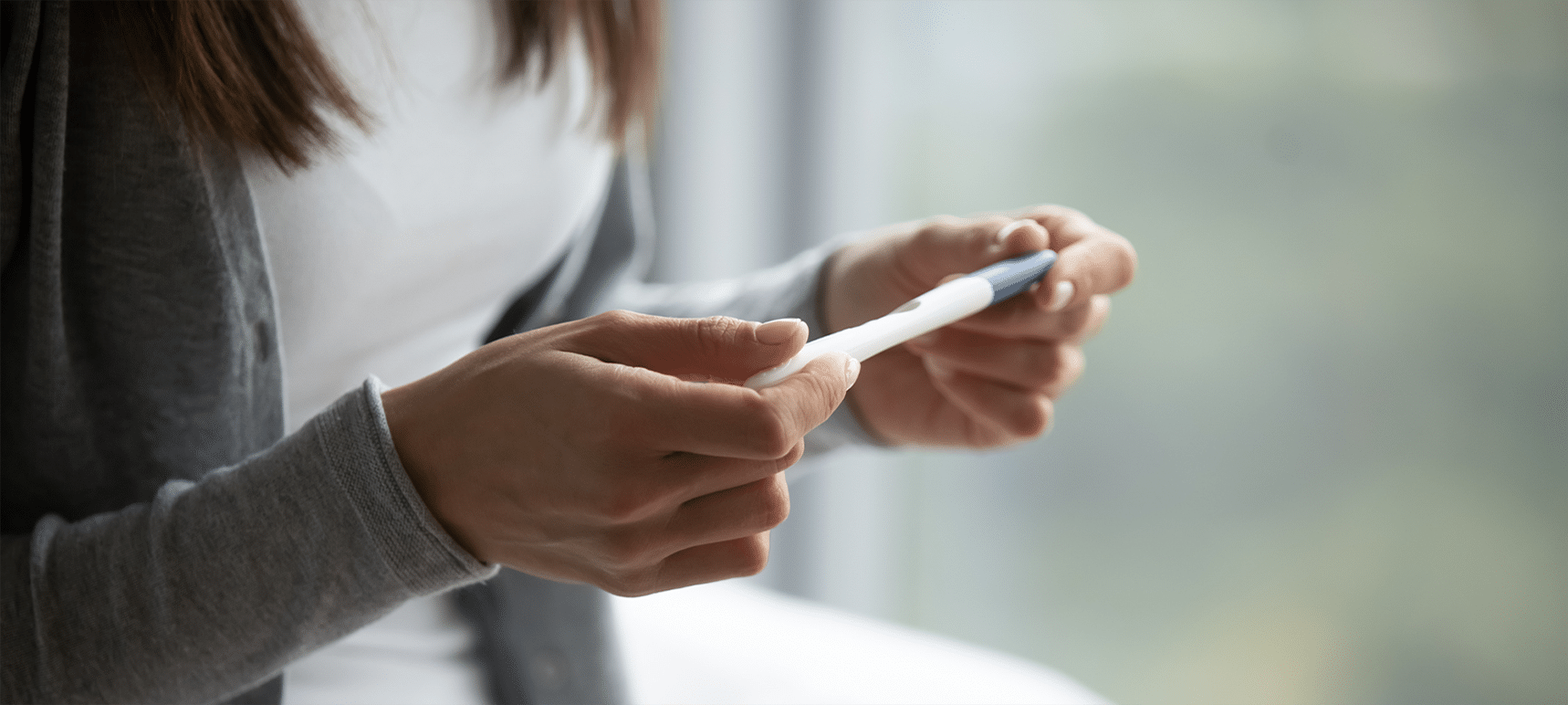
PMS or PMDD: How to Know The Difference
Most women have experienced premenstrual syndrome (PMS) symptoms themself or at least know someone who has. 20-30% of reproductive-age women are believed to experience PMS on a regular basis. Although society has traditionally minimized this condition, it has a significant impact on the lives of women who have recurrent, bothersome symptoms before their period starts that typically end when menstruation begins. If you or someone you know struggles with PMS symptoms, read on to learn more about how you can relieve your symptoms, and when it may be time to see a provider about PMS symptoms, or more severe PMS symptoms, which is known as premenstrual dysphoric disorder (PMDD).
What symptoms does someone with PMS have?
Some women have many symptoms, and others may have just one of the following symptoms. Although this list is long, there are even more symptoms that women with PMS may experience. Symptoms typically are the most prevalent or severe in the 1-2 days before and including the first day of menstrual bleeding. They usually recur monthly during the premenstrual time. However, just because you experience one or more of these symptoms does not mean it is caused by PMS.
- Bloating
- Abdominal cramping
- Fatigue
- Weight changes
- Muscle aches and pains
- Mood changes
- Irritability
- Headaches
- Increased appetite
- Difficulty sleeping
- Anxiety
- Breast tenderness
- Decreased interest in sexual activity
What is premenstrual dysphoric disorder?
Premenstrual dysphoric disorder (PMDD) is more severe than PMS, though many symptoms can be the same. PMDD is not as common as PMS. What makes PMDD unique from PMS is that women with PMDD have symptoms so severe that they negatively impact their daily lives in school, work, social activities, and relationships. Not all symptoms need to be severe for a diagnosis of PMDD, but at least some of the psychological or emotional symptoms are typically bothersome enough that they negatively impact a woman’s quality of life.
Women with PMDD, or who may have PMDD, should talk to a healthcare provider for an evaluation and to get help with their symptoms, which can often be treated with prescription medication and therapy. Don’t worry about knowing whether or not the symptoms you’re experiencing are PMS or PMDD. If you are struggling with symptoms, reach out to our healthcare team at Diana Health so that we can listen to you and partner with you to make an educated decision about how to best proceed with your care.
Can what someone eats impact PMS / PMDD symptoms?
Although dietary changes are often recommended for women experiencing PMS or PMDD symptoms, this is an area where we need more research. An interesting research study of 100 nurses split them into two groups, one that ate their regular diet and one that replaced at least four servings of refined grains each day with whole grain bread. The group that ate the whole grains had a significant decrease in many of their PMS symptoms. Since most women could benefit from eating more whole grains and fewer refined grains, this seems like a beneficial dietary change.
Another interesting research study showed an association between some PMS symptoms in teens and lower-quality diet quality. This doesn’t necessarily mean that their low-quality diet caused the symptoms, even though they saw an association. Low-quality dietary patterns are typically thought to be high in added fats, sugar, and salt. This is an area where more research is needed, but it makes sense to try to eat a high-quality diet, and it may just help PMS symptoms too. A high-quality diet should include whole grains, fruits, and vegetables. Limiting saturated fat may help too.
Some women feel worse when they eat large meals during the premenstrual period so you may want to experiment with small frequent meals to see if it helps your symptoms.
In addition, caffeine and alcohol are PMS symptom triggers for some women. If you are interested in discovering if you have any symptom triggers, try a food diary for the week before your predicted menstrual period start date to see if you can find recurring themes.
Can exercise impact PMS symptoms?
The research is limited, but aerobic exercise may decrease some PMS symptoms, such as bloating, breast swelling, and appetite changes, but not all symptoms. Yoga may also be beneficial though more research is needed. Regular exercise is recommended rather than just exercising during the premenstrual time period.
Do stress and sleep impact PMS symptoms?
Reducing stress or finding ways to manage it in healthy ways can help women who have PMS symptoms. Some evidence-based stress management techniques include mindfulness, meditation, and breathing exercises. Cognitive behavioral therapy (CBT) has also been shown to help women with PMS symptoms, and your CNM, physician, or mental health professionals can refer you to someone who can do CBT if you are interested in trying it.
A lack of quality sleep can also worsen PMS symptoms. Prioritizing sleep is always important, but it may be even more critical during the premenstrual period.
Does PMS have to be treated?
PMS does not have to be treated; however, some treatments are often used to help women who suffer from PMS symptoms that significantly impact their lives in a negative way. If you have bothersome premenstrual symptoms, contact us at Diana Health or talk to your healthcare practitioner to discuss potential treatments or ways to manage your symptoms.
Some of the treatments for PMS are symptom-specific, for example, taking an over-the-counter pain medication if you have a headache. A class of prescription medications called SSRIs (selective serotonin reuptake inhibitors) are considered first-line medications for treating many common PMS symptoms. They are also often used in women with PMDD, similar to but more severe than PMS. Some women with PMS or PMDD take oral contraceptives to decrease or eliminate premenstrual symptoms.
Although you do not have to take medication to treat PMS symptoms, consider talking to your healthcare provider to learn if there are treatments that could help you. Whether or not you decide to treat your PMS symptoms, you may benefit from doing a PMS symptom diary where you track what symptoms are occurring on which days and when you have menstrual bleeding. You may also want to note lifestyle behaviors (what you ate and whether or not you exercised) and potential symptom triggers (such as caffeine, increased stress, or a lack of sleep) so that you can see if you can find any patterns. Consider bringing your symptom diary with you if you talk to a healthcare provider.
Can supplements, vitamins, and/or minerals treat PMS symptoms?
Calcium supplementation may reduce PMS symptom severity; however, there are potential risks associated with calcium supplementation, so talk to your healthcare provider before starting any supplements. There is also limited research for alternative treatments of PMS, including supplemental omega-3 fatty acids, chasteberry, and vitamin B6, that you may want to discuss with your healthcare provider. There is also some research on vitamin E for breast tenderness and magnesium for mood and fluid retention.
Although many women have PMS symptoms, rest assured that there are things that you can do to help you feel better. The lifestyle suggestions above may be beneficial, especially for women with milder symptoms. If your PMS symptoms are negatively impacting your life, are not helped by lifestyle modifications, or are more severe, contact us at Diana Health or your healthcare provider to learn more about what can be done to help you. You are not alone, and we care about you and your well-being. For more information, visit the American College of Obstetricians and Gynecologists’ website.
Share This Post
























